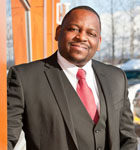
“There wasn’t any one eureka moment as such; there were a lot of different pieces. But when I came here, there was no true foreign-currency exchange program, and over 25 percent of our business is foreign. We developed a program based on my previous experiences and had it adopted by the global business units, and then managed it on a month-to-month basis. To improve our cash flow, I structured a domestic and global receivable factoring program, which required numerous rounds of discussion with our domestic and foreign bankers and attorneys getting it right, giving it the legal and accounting treatment. Once we got it in place, that was a big win for us in treasury.”
In the summer of 2009, Tekni-Plex, Inc., a global packaging manufacturer with annual revenues of around $600 million, was in trouble. In late 2007, the corporation had failed to make an interest payment, which triggered a change in control that saw Oaktree Capital, the private-equity owners, draft in a new management team. Art Richards joined as corporate treasurer soon after. His job: to help steer the corporation clear of any turbulence. Richards has a strong track record working for Fortune 500/1000 global companies in a treasury and finance role, and he needed all of his accumulated experience for the challenge presented by Tekni-Plex. He recently sat down with Profile to share what got him to where he is today and how he got Tekni-Plex back on track.
There are three primary experiences in my past that shaped my professional self. First of all, my father was a [veterinarian], with a hospital attached to our house. I observed his rigor and intellectual prowess by the way he asked penetrating questions to get the best answers, and how he quickly disseminated those responses. Secondly, I spent a year abroad before I started college. This experience made me more adaptable to persevere in a foreign environment, and helped form my perceptions on a more global scale. Finally, I did my internship as an undergraduate at the Department of the Treasury. I worked on one of the biggest municipal bond defaults in history, that of the WPPSS [Washington Public Power Supply System], in the early ’80s, and there I recognized how strong and fragile finance can be.
I got the call from Tekni-Plex because I have experience with companies that were highly leveraged. I also have experience on a global scale and a record of project-management success. They needed a lot of quick fixes right away—that’s why they asked me to come aboard.
The biggest challenge was the liquidity of the company. It had a very tight liquidity situation and required working capital and debt management. I was in charge of centralizing the accounts-payable team and streamlining the information flow and the cash flow of the organization. I was also in charge of forming a domestic credit and collection team—hiring, training, and centralizing, to help manage the working capital. We had to let a couple of people go to get the proper support.
A lot of financing alternatives were not available in the summer of 2009. Borrowing availability was very limited, and the banks were calling me every day demanding compliance updates and weekly cash forecasts.
In the fall of 2010, we alleviated some liquidity concerns. We achieved this through working-capital management, as well as other sources of financing, including a partial refinancing of the company. While it was a relief at the time to know that the company’s liquidity was better and [that] we had an improved infrastructure, I still couldn’t relax, as I was in charge of a lot of other areas, such as insurance, pension, and financial risk, as well as working through an ERP conversion in my departments. I didn’t want to let my guard down.
These challenges seemed very dire, and it took sudden and committed action to bring about improvement. That was rewarding. It’s also rewarding to see the company under the leadership of its CEO, Paul Young, who has been able to turn this ship around and increase its earnings over the four-year span by 60 percent. That came about through a major restructuring, and we look to complete a full refinancing this month [May 2012] based on the turnaround.
I would probably pause before I took such a challenging position again, knowing that it was going to take a lot of committed hours. It was a leap of faith changing jobs, from a secure position as treasurer to a position that wasn’t very secure—fragile, in fact. It added up to a lot of experience, jumping through some rings of fire, but I get the reward of seeing how we were able to turn it around and the raw diversity that we managed—although with a few less hairs along the way.














